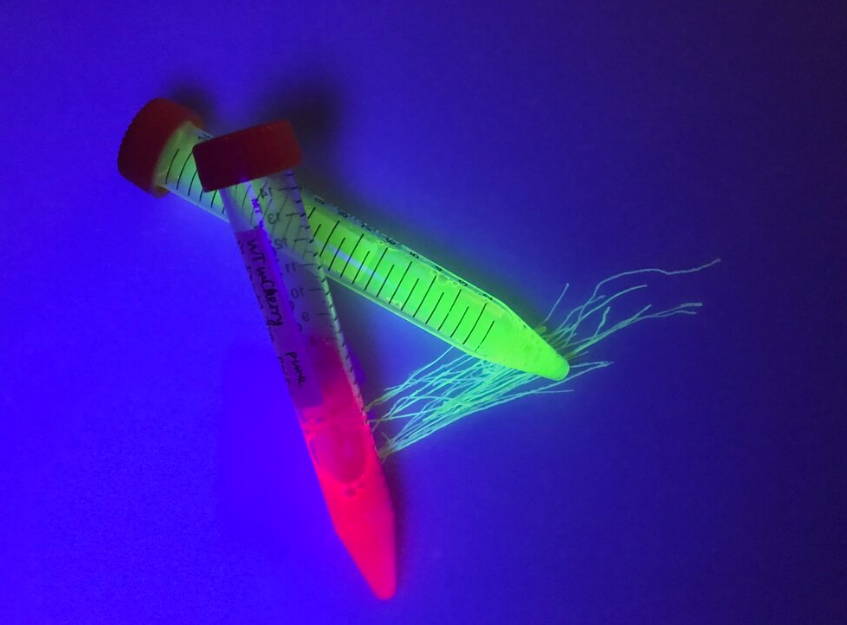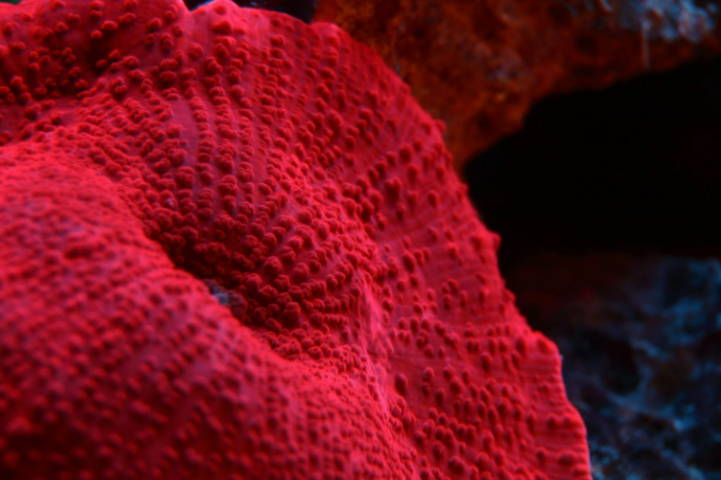-from Berlin-based “Staiy Magazine” / 3 Oct 22′
Discover Werewool, a bio-inspired company that learned from corals how to create natural color, and apply it to develop textiles without using artificial dyes or pigments. Will corals pave the way to a new branch of sustainable fashion?
Dye use and water pollution in the textile industry
Nowadays, water consumption and water pollution are massive subjects in the textile industry. According to Ask Nature, the international textile market creates about 1.2 billion tons of CO2 annually, and textile dyes account for 20% of global wastewater, which is linked with the huge consequential water pollution. The effects of water pollution are far-reaching: the United Nations reports that almost 1.5 million people die annually due to diseases related to drinking pathogen-polluted water. According to Fashion Revolution, only 5% of the raw materials involved in the production and delivery processes are contained within a garment. Therefore, we must pay attention to the 95% of the material process we do not see, a vast component of which is hidden water. What usually happens, is that thick, ink-like water flows through rivers surrounding garment factories; a toxic soup of chemicals discarded from the fashion industry’s synthetic dye processes, spreading into the planet’s water systems.
Why is pigment– this essential component of fashion production – entitled to pollute water systems worldwide? As much as 200 tonnes of water are used per tonne of fabric in the textile industry. Most of this water is returned to nature as toxic waste, including residual dyes and unsafe chemicals. Wastewater disposal is rarely controlled, adhered to, or protected, meaning prominent brands and factory owners are left unaccountable. As more buyers become conscious of the toxic effects of current dyeing practices, other technologies make way for more cost-effective, resource-efficient, and sustainable dyeing alternatives. Current practices and innovations are looking for more healthy and environmentally safe methods for the dyeing process.
Werewool: colorful textiles inspired by corals
In order to face the challenges above, a biomimetic company called Werewool is designing a revolutionary fiber development platform to create biodegradable fibers with customized aesthetic and performance characteristics. Founded in 2018, the company is composed of a great team of distinguished scientists and innovative textile developers who want to indeed combat climate change by exploring nature’s genius for sustainable textile innovations.
Werewool found their inspiration in nature, specifically in corals. While exploring the potential use of that species in providing a sustainable solution for common polluting dye processes and synthetic fibers, the team found a red fluorescent protein in Discosoma coral, whose structure can be mimicked in order to grow biodegradable fibers, without needing toxic dyes and petroleum-based synthetics.

Why corals?
Corals are one of the creatures we look at with fascination in most underwater photographs. Nearly all corals are colonies, which means they are made up of hundreds or thousands of individual animals called polyps. But why do these coral reefs have such bright, attractive colors? The colors found in multicolored corals are mostly due to photosynthetic pigments, fluorescent proteins, and non-fluorescent chromoproteins. According to Tropical Marine Bio, to comprehend why corals obtain their color, it is first essential to learn the coral polyps’ construction. The prevalence of polyps has clear, transparent bodies over their hard, white skeletons. Millions of zooxanthellae live inside the tissues of these polyps. These zooxanthellae produce pigment, and because they reside in the transparent tissue of the polyp, the dyes are visible, and the corals get their beautiful colors.
Werewool is mainly inspired by Discosoma Coral’s color characteristics. The Discosoma Coral depends on the structure of RFP (red fluorescent protein) as a source of colorant to support a symbiotic relationship with algae to survive. According to the team, Werewool is currently “developing a platform to design fibers at the DNA level for sustainable textiles with inherent properties such as color, moisture management, and stretch, that meet the demands of today’s consumers”.

So what?
Werewool’s fiber doesn’t need any further processing and is biodegradable. By mimicking the aesthetic and performance of corals, the company is able to produce proteins crosslinked with natural biopolymers, resulting in vibrant colored fibers. According to them, “by creating fibers with inherent color, we are preventing the pollution associated with conventional textile dyes that cause dead zones in rivers, streams, and other freshwater resources”.
We can’t wait to see these innovations in the market.
article link: https://staiy.com/blogs/staiy-edit/fashion-painted-by-corals-discover-werewool?article=articlepage
